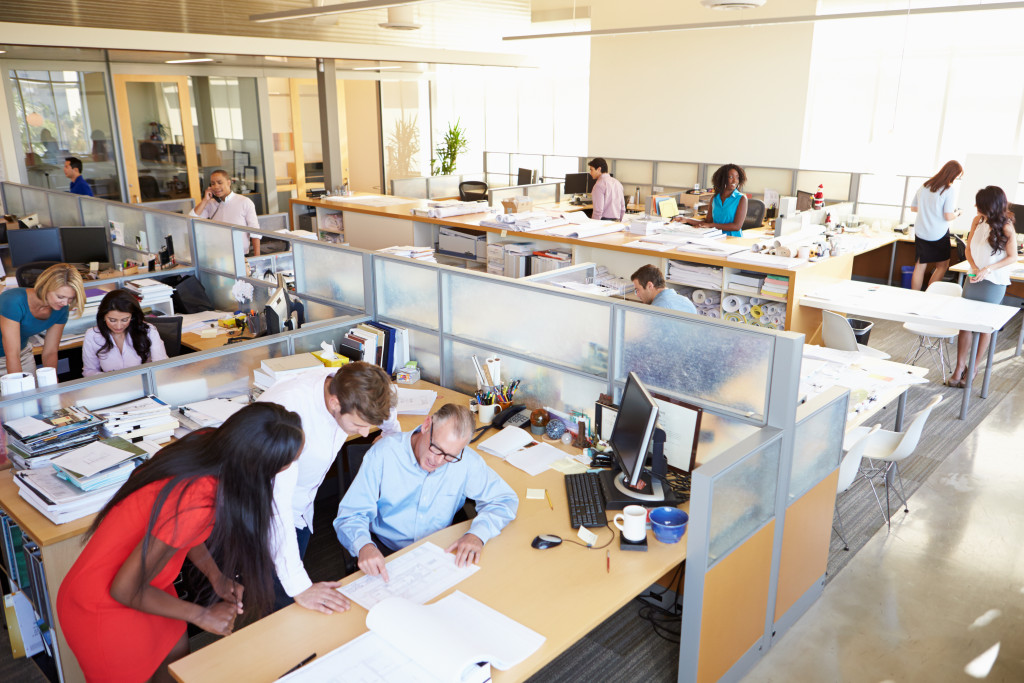- Regular safety training and drills prepare construction workers to handle potential hazards.
- Providing appropriate safety equipment, including specialized items based on job roles, can prevent avoidable accidents.
- Regular safety inspections, enhanced with technology, can identify and rectify hazards swiftly, preventing accidents.
- Consistent implementation and enforcement of safety policies establishes a safety culture within the construction business.
- Easy and quick accident reporting mechanisms encourage workers to report incidents early, enabling proactive prevention measures.
Safety in construction should always be a top priority. Construction work poses many hazards that could cause work-related injuries or accidents. Occupational Safety and Health Administration (OSHA) records show that the construction sector suffers more fatal and non-fatal work-related accidents than any other industry.
As a business owner or entrepreneur, you must ensure workers are safe and healthy on the job site. This blog post will dive into some safety strategies you can implement to prevent work-related accidents in your construction business.

Conduct Safety Training Regularly
Safety training should be mandatory for all employees in your construction business. Conducting safety training regularly helps ensure workers are prepared to handle any situation or hazard. Training should include how to properly handle tools and equipment, lift heavy objects, guard against falls, and identify and avoid electrical hazards, among other things. It is also essential to keep records of all safety training conducted and have employees sign off on it to ensure they know the safety protocols.
Specific Safety Training
In addition to general safety training, specific training based on job roles and responsibilities should also be provided. For instance, heavy machinery workers should receive thorough instruction and ongoing training to ensure they can operate the machines safely and proficiently. Regular drills simulating emergencies are also recommended to enhance workers’ readiness and responsiveness in the face of an incident. These drills can range from fire drills to fall protection exercises.
Have Proper Safety Equipment
Provide workers with safety equipment such as hard hats, safety glasses, gloves, and boots. Employee safety equipment should always be readily available on-site to help prevent avoidable accidents.
Specialized Equipment
Additionally, depending on the job site and the nature of the job, more specialized equipment like respirators, earplugs, and face shields may be needed. If you are working on a high-rise project, you should set up a reliable fall protection safety system at the site. The system should be inspected regularly to ensure it is in good condition and provides adequate protection. Employers should also regularly inspect and maintain all safety equipment to ensure they are in good working condition.
Conduct Frequent Safety Inspections
Conduct regular safety inspections to identify and address any potential hazards. Have a safety checklist that includes all potential hazards, like checking ladders for corrosion or identifying potential trip hazards on job sites, and use this list during walkthroughs. Document identified issues and ensure that crews work to rectify any hazards immediately. The more frequent the inspections, the faster the hazards can be addressed before an accident occurs.
Use of Technology in Inspections
Integrating technology into safety inspections in the digital age can drastically improve their effectiveness. Utilizing mobile safety inspection apps or software allows for real-time reporting, digital checklists, and photo documentation, making tracking safety hazards and their resolution easier. Technology also allows for better data analysis, which can help identify patterns and areas of improvement in safety protocols.
Have Safety Policies in Place
Establish and reinforce safety policies and procedures. Start by creating a written safety policy and ensure staff know and understand the key parts of this policy. Safety policies should cover a range of areas, like training requirements, the use of personal protective equipment, and incident reporting. It is worth communicating to the workforce that safety is a priority and is central to business operations.
Consistent Implementation and Enforcement
Once safety policies are put in place, they must be consistently implemented and enforced. Half-hearted or sporadic enforcement can lead to confusion and non-compliance among employees. Regularly monitoring and reinforcing policies will ensure their effectiveness and help establish a culture of safety within the company. Employers should also establish consequences for non-compliance, such as disciplinary action or retraining, to further emphasize the importance of adhering to these safety measures.

Encourage Reporting
Make sure that workplace accident reporting is easy, fast, and encouraged. Workers should have access to a reporting mechanism and be able to report quickly and directly. This enables workers to report incidents early, which may be able to be addressed before accidents occur. Organizations, in turn, need to take reports seriously and act promptly to rectify any issues.
Safety in construction is not only a moral obligation but a legal one. Your duty as a business owner or entrepreneur is to ensure that all your employees are safe while on the job site. By implementing the above strategies, you can minimize the chances of work-related accidents in your construction business. Remember, a safety-first approach can not only save lives but also save you thousands of dollars in incident or worker compensation.


